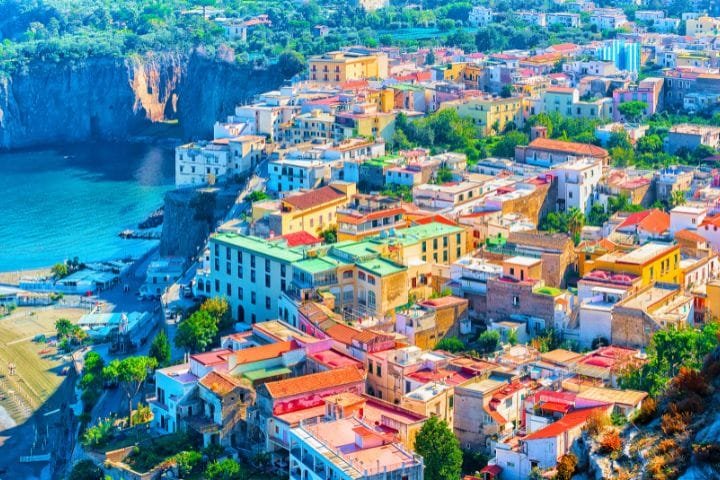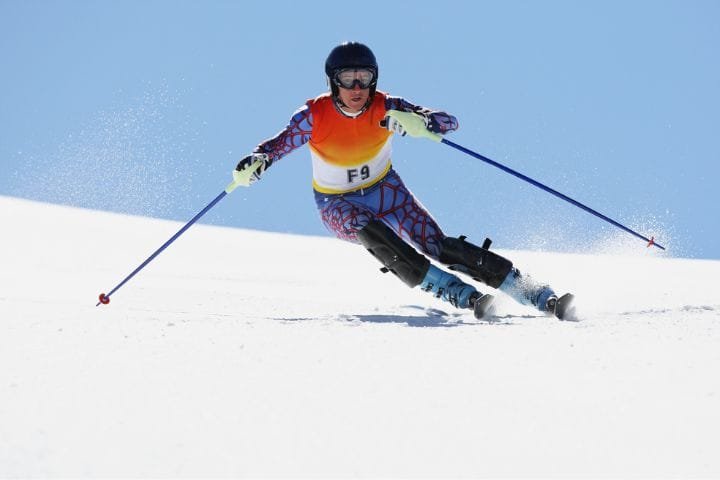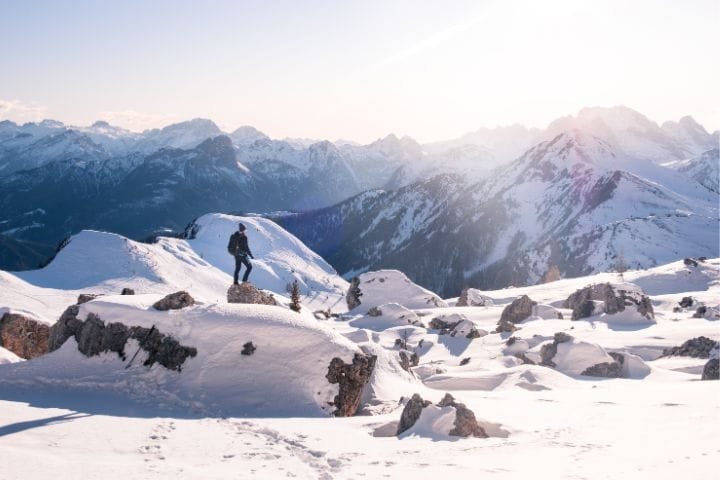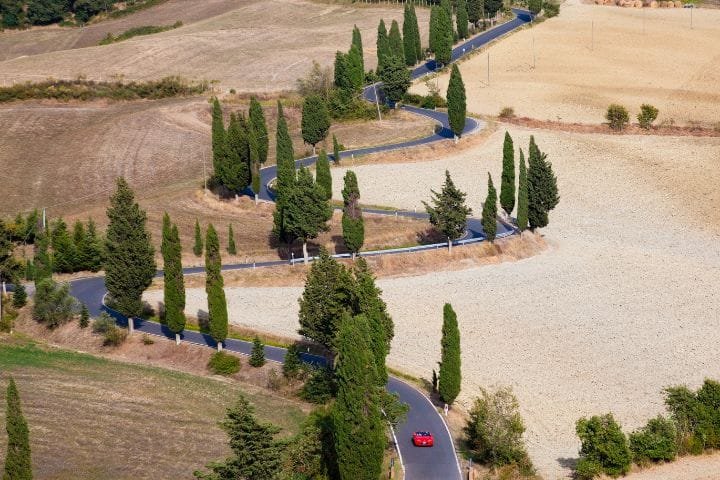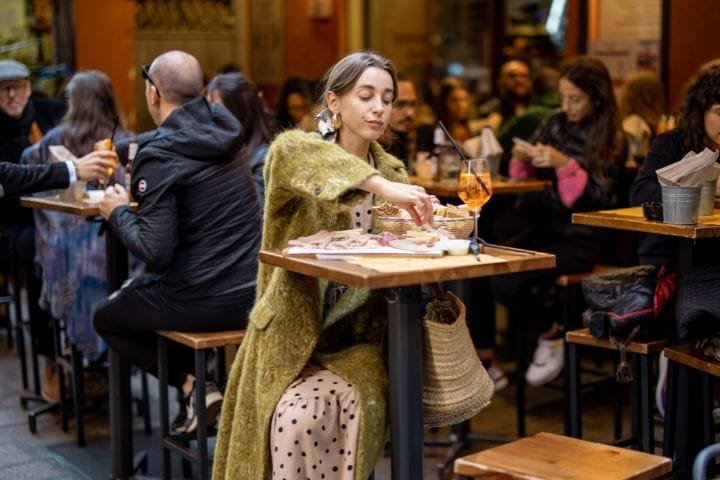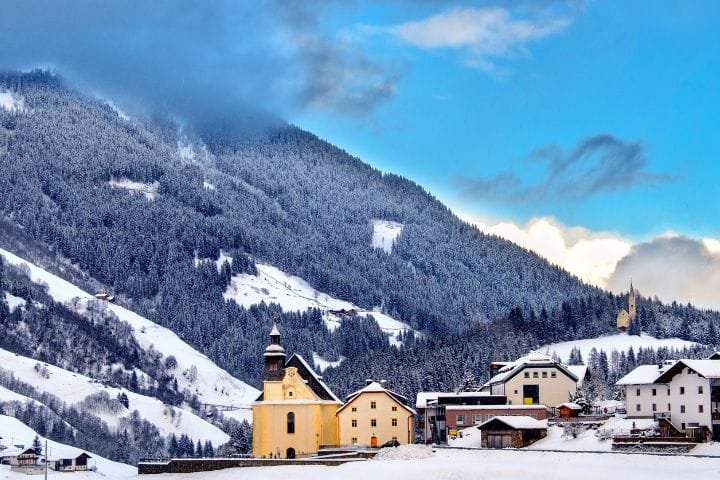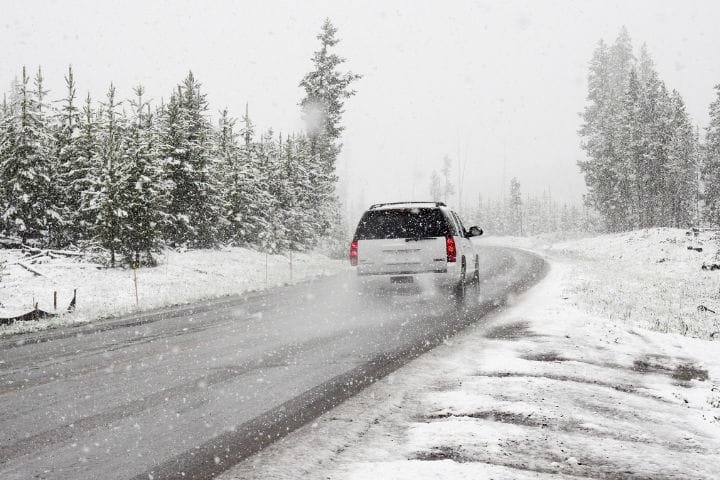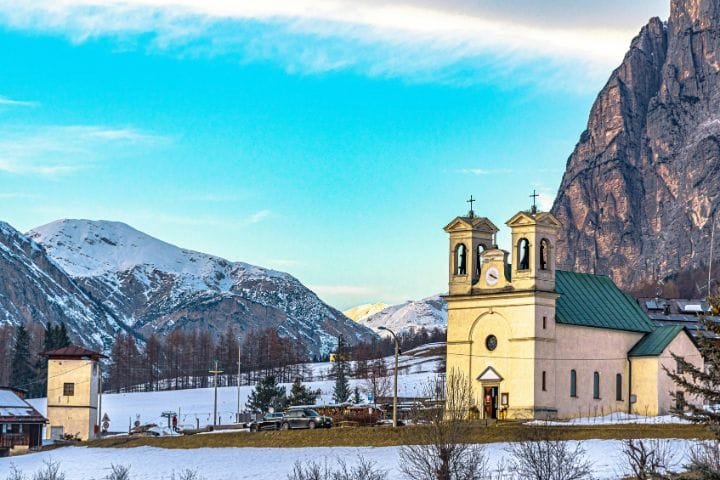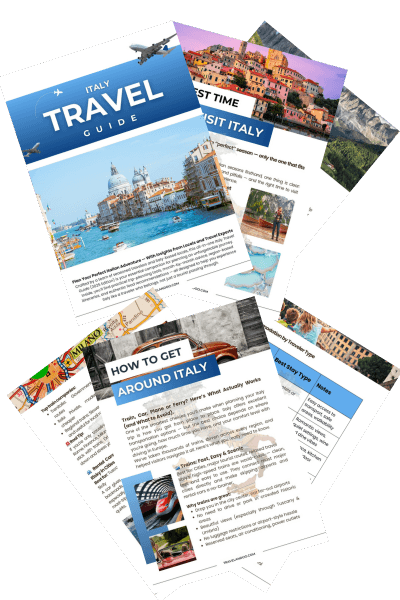Hidden Scenic Routes in Piedmont: Discover Italy’s Secret Drives (2025 Guide)

by Luca | Last Updated December 20, 2025
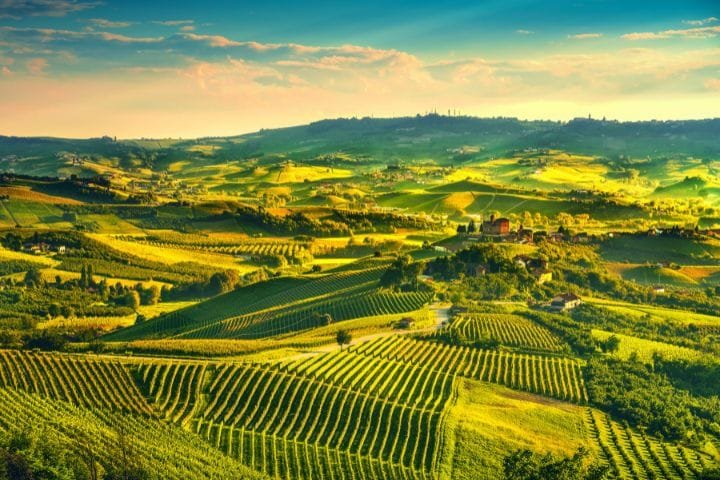
Ready to discover one of Italy’s best-kept secrets for spectacular scenic drives? As someone who has lived in Florence for over twenty-five years and explored every corner of our beautiful peninsula, I can tell you that Piedmont offers some of the most rewarding and least crowded scenic routes in all of Italy.
While most international visitors flock to Tuscany’s rolling hills or the Amalfi Coast’s dramatic coastline, we locals know that hidden scenic routes in Piedmont through wine country, Alpine valleys, and medieval villages provide equally stunning scenery with authentic Italian experiences that haven’t been transformed by mass tourism.
Did you know that Piedmont boasts over 2,000 kilometers of scenic country roads winding through landscapes that range from snow-capped Alpine peaks to rolling vineyard hills, from medieval castles perched on strategic hilltops to traditional villages where time seems to have stopped centuries ago?
This remarkable northwestern region offers everything you could want from Italian scenic driving – world-class wine estates, UNESCO World Heritage landscapes, dramatic mountain passes, and charming towns where locals still gather in piazzas for evening passeggiata.
Let me share the secret drives that we Italians treasure – routes that combine spectacular natural beauty with rich cultural heritage, excellent cuisine, and that warm Piedmontese hospitality that makes every journey feel like a discovery shared among friends!
🧭 Where Piedmont Fits Among Italy’s Scenic Drives
Piedmont offers some of Northern Italy’s quietest and most rewarding backroads, perfect for travelers who want scenery without crowds.
- Discover Italy’s most beautiful roads beyond the obvious → Best scenic drives in Italy
- Plan relaxed routes with fewer tourist bottlenecks → How to plan a perfect Italy road trip
Langhe Wine Country: Beyond the Famous Routes
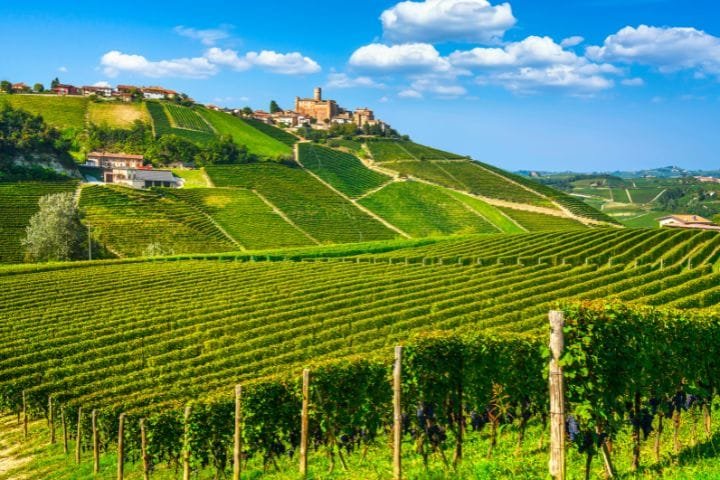
Hidden vineyard roads between Barolo and Barbaresco offer authentic experiences away from the main tourist routes. While everyone follows the official wine road, I prefer the secondary roads that wind through the vineyards, like the one connecting Treiso to Barbaresco, passing by historic farmhouses.
One of my favorite discoveries is the dirt road that climbs from Neive toward the forests of Treiso. During harvest season in September, this road offers breathtaking views over golden vineyards, and you often encounter farmers transporting grapes with their tractors – moments of genuine Piedmontese rural life.
Secret viewpoints overlooking Alba and vineyard valleys include the hill above Roddi, where an unmarked little road leads to a small chapel from which you can see the entire valley. From there, on clear days, you can see the Alps on the horizon and vineyards stretching as far as the eye can see.
Lesser-known wine villages like Treiso, Neive, and Castiglione Falletto still maintain the authentic atmosphere of rural Piedmont. In Treiso, the road leading to the Meruzzano hamlet offers incredible views of the Barbaresco vineyards, while local winemakers are always ready to share a glass of wine with curious visitors.
Seasonal routes through truffle forests and hazelnut groves change completely in appearance throughout the year. In autumn, the roads that cross the hazelnut groves around Cortemilia turn golden, while in spring the cherry blossoms create an unforgettable spectacle.
Family wineries accessible only by country roads offer experiences you’ll never find in tourist guides:
- Cascina del Fant in Barbaresco: dirt road but incredible tastings
- Azienda Agricola Roagna: hidden among vineyards, extraordinary wines
- Cascina Luisin: small family winery with warm hospitality
- Tenuta Cisa Asinari: medieval castle with excellent wines
- Cantina Sociale di Barbaresco: authentic cooperative with honest prices
Plan Your Trip with Our Favorite Booking Tools
Monferrato Hills: Medieval Castles and Rolling Landscapes
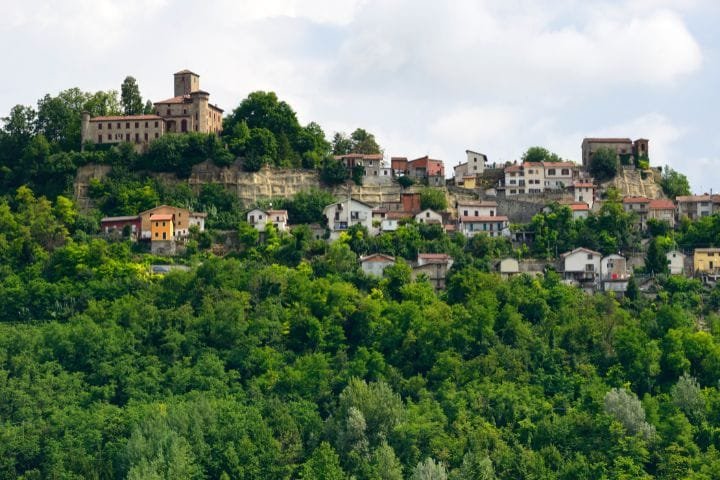
Secret route from Castell’Alfero to Portacomaro follows ancient connecting roads between medieval castles. This route, which I call “the hidden castles road,” crosses hills covered with vineyards and forests, passing through forgotten hamlets where time seems to have stopped.
Undiscovered Nizza Monferrato territory offers gentle, rolling landscapes where Barbera d’Asti vineyards alternate with centuries-old oak forests. The road that climbs from Nizza toward Mombaruzzo is particularly beautiful at sunset, when golden light illuminates the hills.
Medieval hilltop villages like Cocconato, Albugnano, and Mombello are hidden jewels that maintain their original architecture. Cocconato, in particular, is reached by a panoramic road that offers spectacular views of Monferrato, while Albugnano preserves one of Piedmont’s most beautiful Romanesque parish churches.
Ancient pilgrimage routes and religious heritage can still be followed by car today. The Via Francigena crosses Monferrato with a route that touches Vercelli, Santhià, and other historic centers, offering glimpses of a perfectly preserved medieval Italy.
Panoramic views with Alps backdrop are best enjoyed from the hills around Moncalvo and Penango. Here, on clear days, the Alpine chain provides a spectacular backdrop to vineyards and medieval castles, creating a landscape that seems to emerge from a Renaissance painting.
Hidden treasures of Monferrato:
- Castello di Razzano: dirt road but incredible views
- Sanctuary of Crea: route through chapels and sacred woods
- Village of Rosignano: ghost town with ruined castle
- Vignale Monferrato: hidden capital of wine tourism
- Camino: medieval village with intact Paleologi palace
Alpine Valleys: Mountain Secrets of Northern Piedmont
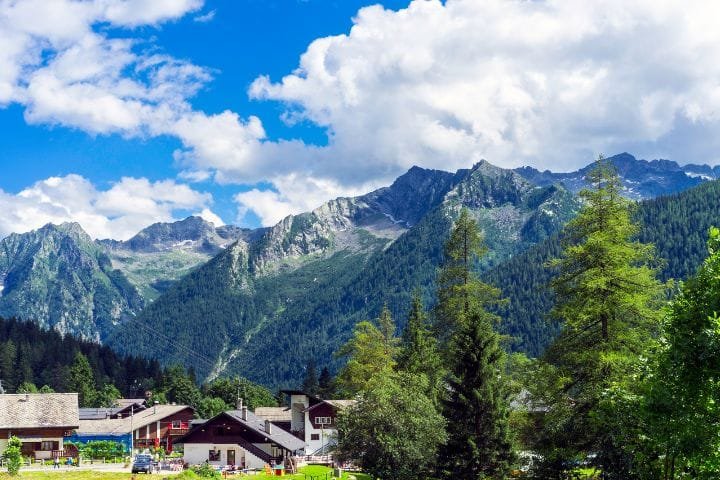
Valle Anzasca toward Monte Rosa base offers one of the most spectacular and least-known alpine routes in Piedmont. The road that climbs from Piedimulera toward Macugnaga crosses landscapes that change dramatically with altitude, from chestnuts in the lower valley to alpine pastures at high altitude.
This valley still maintains Walser traditions, with wooden and stone architecture that reminds you more of Switzerland than Italy. Small villages like Bannio Anzino preserve an authentic atmosphere that you can’t find elsewhere in the Alps anymore.
Val Formazza with waterfalls and Swiss borders represents one of the wildest and most spectacular areas of Alpine Piedmont. The road climbing from Domodossola is challenging but provides incredible emotions, especially when you reach the Toce waterfall, one of Europe’s highest.
Valle Maira, with pristine mountain villages, offers access to an alpine culture that resists time. Villages like Elva, Stroppo, and Acceglio maintain centuries-old traditions, while the road connecting them provides breathtaking views of peaks exceeding three thousand meters.
Val Varaita and French border mountain culture shows transalpine influence in language, architecture, and traditions. The road that climbs from Verzuolo toward Bellino and Pontechianale crosses alpine landscapes where Occitan is still spoken and traditions common with France are maintained.
Mountain driving tips and seasonal accessibility:
- June-September: all roads are generally open
- October-May: always check Alpine pass conditions
- Carry snow chains even in summer for higher passes
- Fill up before climbing – gas stations are rare in high mountains
- Respect wildlife, especially at dawn and dusk
🏔️ Mountain & Alpine Scenic Alternatives
Northern Piedmont’s valleys offer alpine scenery without the crowds of major mountain passes.
- High-altitude drama and iconic passes → Dolomites driving guide
- Broader alpine region comparisons → Best scenic drives in Northern Italy
Po Valley Hidden Gems: Rice Fields and River Routes
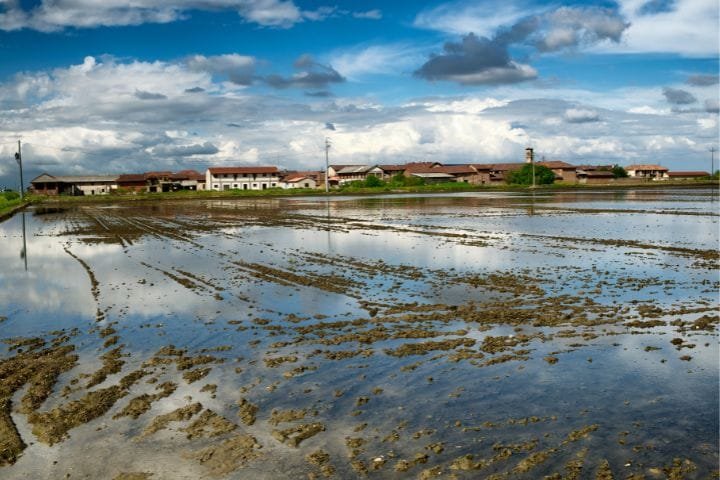
Panoramic routes through the Vercelli rice fields offer a unique scenery in Italy, especially during the flooding season (April-May), when the fields transform into water mirrors reflecting the sky. The road from Vercelli toward Asigliano Vercellese crosses this aquatic plain, creating almost surreal sensations.
During rice flowering (July), fields turn intense green, while in autumn, during harvest, they assume spectacular golden tones. It’s an agricultural landscape that few foreigners know, but Piedmontese consider one of Italy’s most beautiful landscapes.
Po River delta explorations lead to discovering a completely different Piedmont, where the great river approaches the Padana plain. Roads following Po embankments offer glimpses of still wild nature, with riparian forests and wetlands rich in wildlife.
Way of St. James pilgrimage route drivable by car follows ancient pilgrimage routes crossing Piedmont. This historic itinerary touches abbeys, Romanesque parishes, and medieval villages, offering a journey through time across Piedmontese spirituality and culture.
Biella textile heritage and mountain foothills tell Piedmont’s industrial story through landscapes where ancient mills integrate harmoniously with nature. The road climbing from Biella toward Oropa crosses forests and pastures where you still breathe the air of the textile industry that made Piedmont famous worldwide.
Discoveries in the Piedmont plain:
- Granges of Vercelli: authentic rural architecture
- Trino Vercellese: synagogue and historic Jewish community
- Crescentino: medieval village on the Po
- Livorno Ferraris: rice fields and culinary traditions
- Santhià: historic stop on the Via Francigena
Border Routes: French and Swiss Connections
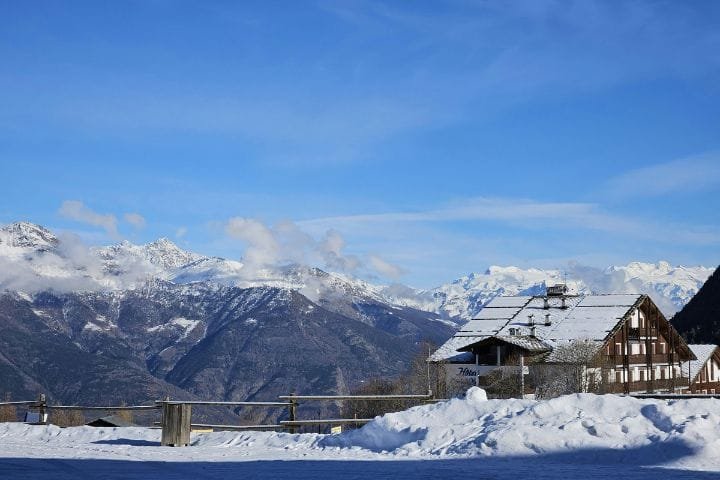
Valle d’Aosta approach roads through Piedmont offer panoramic alternatives to main highways. The road climbing from Ivrea toward Pont-Saint-Martin crosses the morainic Serra hills, providing glimpses of glacial lakes and Erbaluce di Caluso vineyards.
Scenic French border crossings through lesser-known mountain passes like Colle della Maddalena or Colle di Tenda show spectacular alpine landscapes and allow discovery of how Piedmontese culture gradually blends with French culture.
Swiss Ticino connections through alpine valleys show Swiss influence in local architecture and traditions. The road from Domodossola climbing toward Simplon Pass is a classic, but the one crossing Val Formazza toward the border is much wilder and more spectacular.
Cultural transitions and linguistic diversity are clearly perceived when driving toward borders, where Italian mixes with French, German, and local dialects like Walser. These border territories maintain a unique identity that greatly enriches the driving experience.
Cross-border driving planning:
- Documents needed for border crossings
- Differences in neighboring countries’ road regulations
- Currency exchange in non-euro border areas
- Valid international car insurance
- Emergency numbers for each country
🗺️ Cross-Border Scenic Routes & Extensions
Piedmont’s border roads add international flavor to a Northern Italy road trip.
- Alpine regions connected by mountain passes → Best scenic drives in Northern Italy
- Mountain driving with cultural diversity → Dolomites driving guide
- Build a multi-region scenic journey → Best scenic drives in Italy
Seasonal Drives: Best Times for Hidden Route Exploration
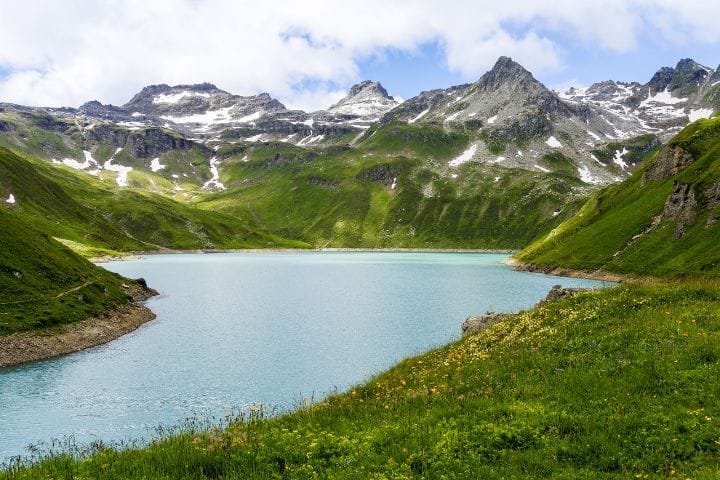
Spring awakening with vineyard and mountain wildflowers (March-May) offers some of the most magical moments for driving in Piedmont. Cherry blossoms in the Langhe, narcissus in Alpine valleys, and tender green of vineyards create landscapes of indescribable beauty.
During this period, mountain roads begin reopening after winter, allowing access to alpine villages that have remained isolated for months. The air is crystal clear, days grow longer, and there’s that sense of rebirth that only alpine spring can provide.
Summer Alpine access and high mountain passes (June-September) allow exploration of Piedmont’s most remote and spectacular alpine areas. It’s the best time to drive roads like the one climbing to Colle del Nivolet or to reach high-altitude refuges and alpine pastures.
Autumn harvest season with colors and festivals (September-November) perhaps represents the most beautiful time for driving in the Langhe and Monferrato. Vineyards turn red and gold, the air fills with the scent of must, and every weekend there’s a different festival celebrating local products.
Winter mountain driving and thermal spring access (December-February) offers completely different scenery, with snow-covered landscapes that transform Piedmont into an enchanted world. Thermal baths in Acqui, Agliano, or Lurisia become relaxation oases after days of driving on snowy roads.
Photography timing and weather considerations:
- Dawn and sunset always offer the best light
- Autumn fog creates magical atmospheres but reduces visibility
- Summer mountain thunderstorms can be sudden and dangerous
- Winter ice requires appropriate tires and chains
- Always consult local forecasts before departing
Local Secrets: Food, Wine, and Cultural Discoveries
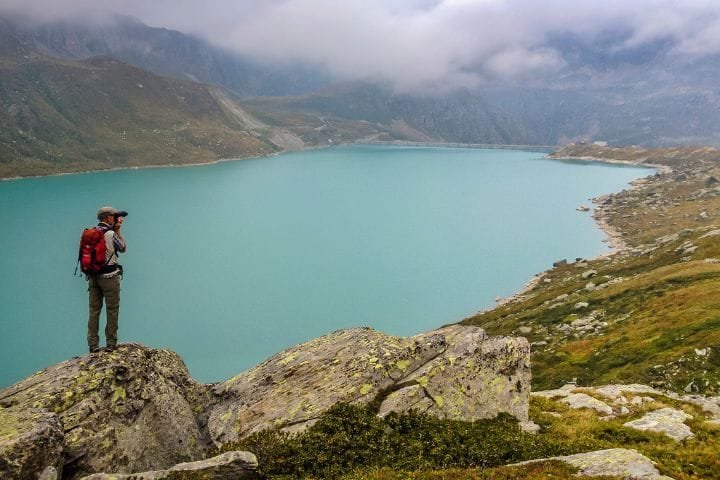
Hidden agriturismos and family restaurants represent the true treasure of Piedmontese gastronomy. Places like Osteria del Borgo in Barolo or Trattoria della Posta in La Morra still serve traditional Piedmontese cuisine prepared the old way, with local ingredients and recipes passed down through generations.
Many of these places are found along secondary roads, hidden among vineyards or in smaller villages. They’re places where owners welcome you like a family friend and where you can taste dishes you’ll never find in tourist restaurants.
Traditional markets and artisan workshops keep local traditions alive. The truffle market in Alba, the hazelnut market in Cortemilia, or weekly markets in small Monferrato villages offer authentic products and opportunities to meet local producers.
Thermal springs and wellness retreats hidden in alpine valleys offer relaxation moments after driving days. Free thermal baths in Lurisia or the more organized ones in Acqui Terme allow discovery of a thermal tradition dating back to Roman times.
Local festivals and seasonal celebrations animate Piedmontese villages throughout the year. Alba’s Truffle Fair, Cortemilia’s Hazelnut Festival, or grape festivals during harvest offer opportunities to experience authentic traditions.
Authentic Piedmontese experiences:
- Wine tastings directly from producers in cellars
- Truffle hunting with trained dogs (October-December)
- Participating in grape harvest at family wineries
- Piedmontese cooking classes at traditional agriturismos
- Walking excursions in vineyards with tastings
Practical Information for Hidden Route Exploration
Navigation tips for unmarked country roads become essential when leaving the main road network. Many of Piedmont’s most beautiful roads aren’t correctly shown on commercial GPS systems, so it’s always better to carry paper maps and ask locals for directions.
Fuel availability and services can be limited in rural and mountain areas. Automatic gas stations are common, but it’s always better to fill up in larger centers before venturing onto secondary roads.
Accommodation in lesser-known areas ranges from family agriturismos to charming small hotels. Many historic farmhouses have been transformed into accommodations offering authentic experiences of Piedmontese rural life.
Emergency contacts and mountain safety are fundamental when exploring alpine valleys. The unified emergency number 112 works everywhere, but cell phone coverage can be limited in high mountains.
Respect for local communities and private property is essential for maintaining access to these pristine areas. Many roads cross private property or agricultural land where it’s important to respect gates, not damage crops, and not disturb animals.
Essential practical information:
- Always carry water and emergency snacks
- Check weather conditions before departure in mountain areas
- Respect private property signs and agricultural activities
- Keep emergency numbers and local contacts handy
- Plan flexible itineraries accounting for weather delays
Discovering Piedmont’s Hidden Beauty
After decades of exploring these incredible landscapes, I can tell you that Piedmont’s hidden scenic routes offer something far more valuable than just beautiful views – they provide authentic connections to landscapes and cultures that have remained essentially unchanged for centuries. These secret drives showcase our region as we locals know and love it.
The key to truly appreciating these hidden routes is embracing the slower pace and genuine curiosity that allows you to discover the stories, traditions, and natural beauty that make each journey special. Some of my most treasured Piedmont memories come from spontaneous encounters with local winemakers, farmers, and artisans who shared their knowledge and often their tables with curious visitors.
My current approach involves choosing strategic bases in towns like Alba, Asti, or Cuneo and making day excursions to different hidden routes, always leaving room for spontaneous discoveries and extended stops when something captures my interest. This strategy has led to some of my most rewarding travel experiences anywhere in Italy.
Most importantly, these hidden routes represent the authentic Italy that exists beyond tourist brochures and crowded attractions. They showcase landscapes shaped by centuries of careful cultivation, communities that maintain genuine traditions, and natural beauty that remains largely undiscovered by mass tourism.
Take your time, respect our rural communities, and prepare to discover why those of us who call Italy home consider Piedmont one of our country’s most treasured and least-spoiled regions for scenic driving adventures. The hidden routes await your discovery!
Plan Your Trip with Our Favorite Booking Tools
FAQs on Hidden Scenic Routes in Piedmont
What makes Piedmont’s scenic routes “hidden gems”?
Piedmont’s lesser-known routes pass through quiet vineyards, medieval villages, and remote mountain passes that most tourists miss—perfect for travelers seeking authentic, off-the-beaten-path drives.
Are the hidden scenic routes in Piedmont suitable for all vehicles?
Most routes are accessible by standard cars, but some rural roads may be narrow or winding. A compact car or SUV is recommended for comfort and easier maneuvering.
When is the best time to explore Piedmont’s secret drives?
Late spring (May–June) and early fall (September–October) are ideal for scenic drives. Expect fewer tourists, pleasant weather, and beautiful seasonal landscapes like vineyard harvests or wildflower blooms.
Do I need GPS or special maps for these hidden routes?
Yes, using a GPS or offline map app is recommended since some remote areas have limited cell coverage. Google Maps and apps like Maps.me or Komoot work well for navigation.
Can I combine these hidden routes with Piedmont’s wine or food experiences?
Absolutely! Many hidden drives lead through Barolo and Barbaresco wine regions or stop at local trattorias for Piedmontese cuisine. These routes are perfect for combining scenic travel with culinary delights.
🏁 Design a Crowd-Free Northern Italy Route
Piedmont is ideal for travelers who value quiet roads, landscapes, and local character.
- Choose scenic routes that avoid tourist hotspots → Best scenic drives in Italy
- Keep routes flexible and stress-free → How to plan an Italy road trip
💬 We’d love to hear from you!
Have questions, tips, or personal travel stories to share? Drop them in the comments below — your insights help fellow travelers plan their adventures too.


